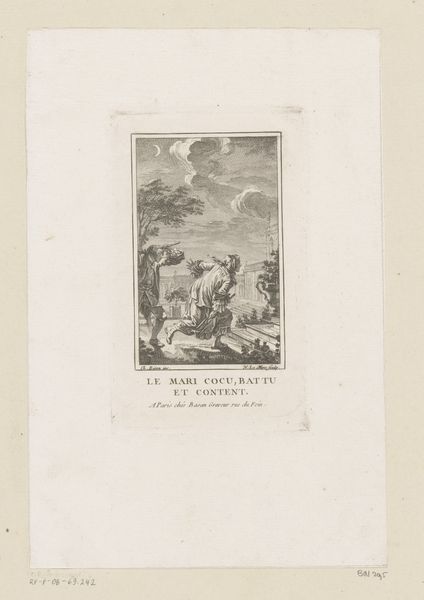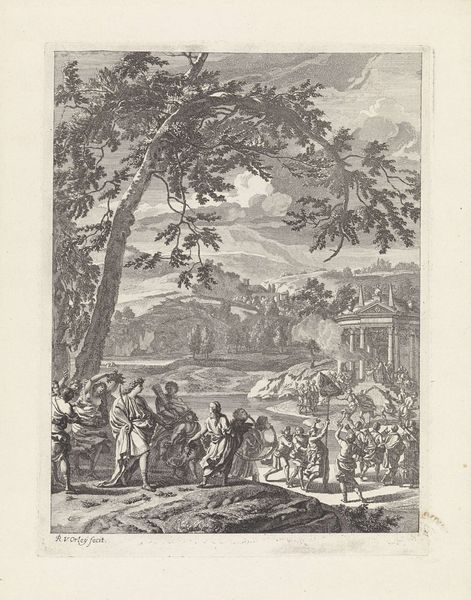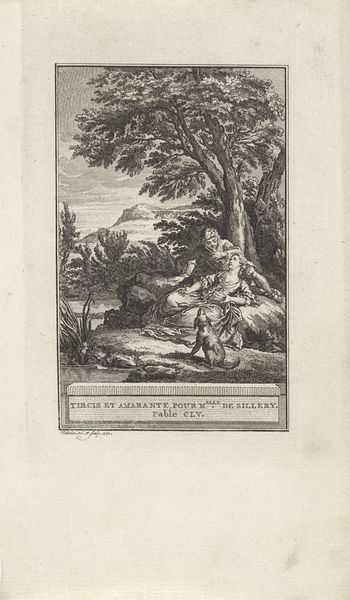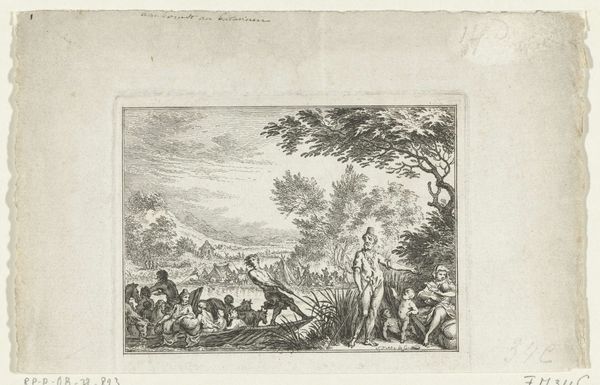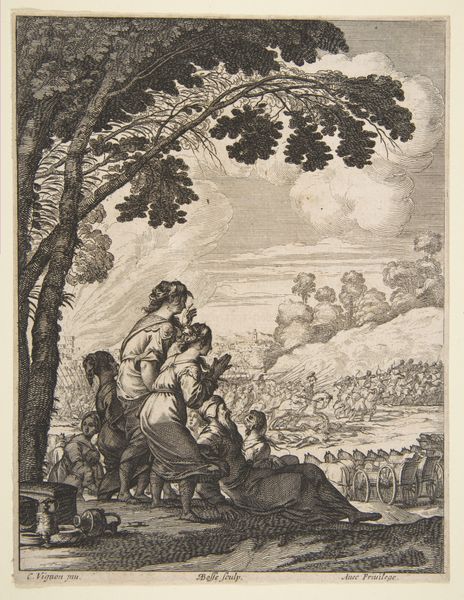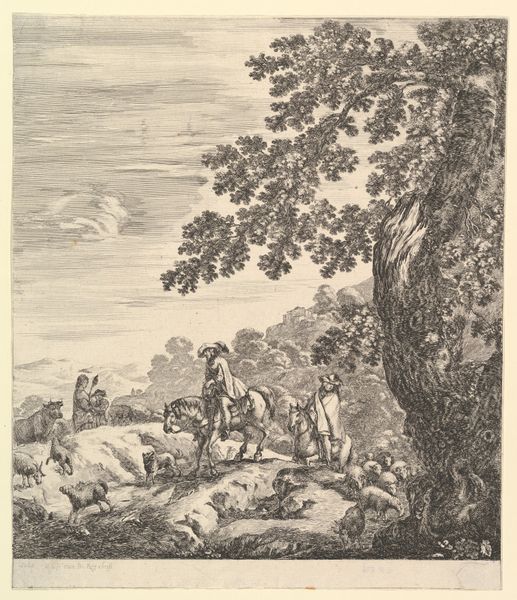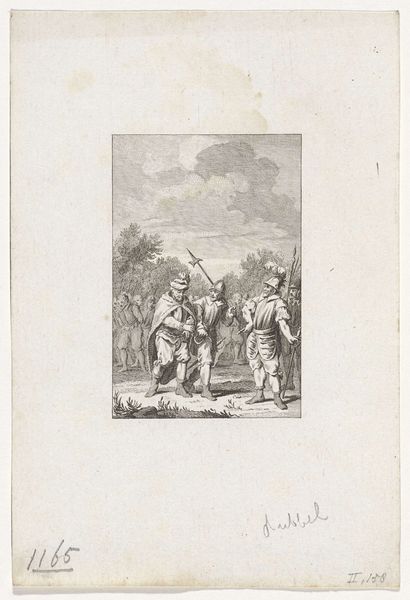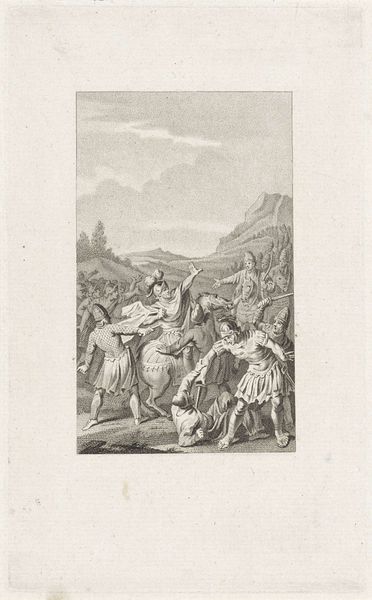
print, engraving
#
neoclacissism
# print
#
figuration
#
line
#
history-painting
#
engraving
#
realism
Dimensions: height 160 mm, width 100 mm
Copyright: Rijks Museum: Open Domain
This is "Oorlogen der Batavieren" (Wars of the Batavians), made by Reinier Vinkeles, sometime between the late 18th and early 19th century, using engraving on paper. The act of engraving is crucial to understanding this print. Lines are incised into a metal plate, then filled with ink and transferred to paper under great pressure. Vinkeles skillfully uses this process to create a detailed scene of conflict. Notice how the density of lines varies, creating areas of light and shadow that give the image depth and drama. Engraving, unlike drawing, is an indirect process. The artist doesn't directly apply the image to the paper, but rather mediates it through the metal plate. This act of translation, of working through a material, adds a layer of complexity to the final print. The subject matter, the Batavian Wars, speaks to a specific moment in Dutch history and national identity. However, the print itself, made through a laborious process, reminds us of the human effort involved in creating and disseminating these historical narratives. By considering the material and the making, we gain a richer appreciation of the artwork's cultural significance, blurring the lines between historical document and crafted object.
Comments
No comments
Be the first to comment and join the conversation on the ultimate creative platform.

